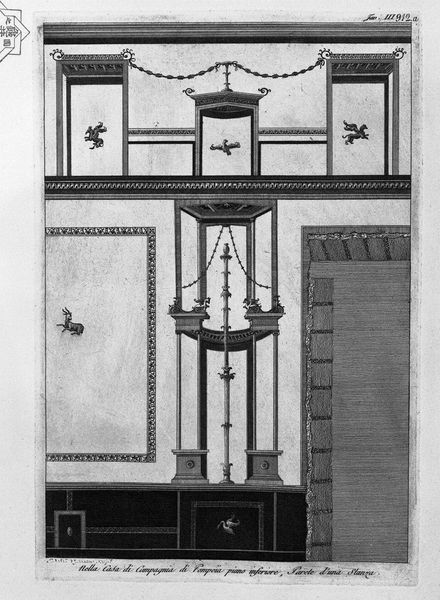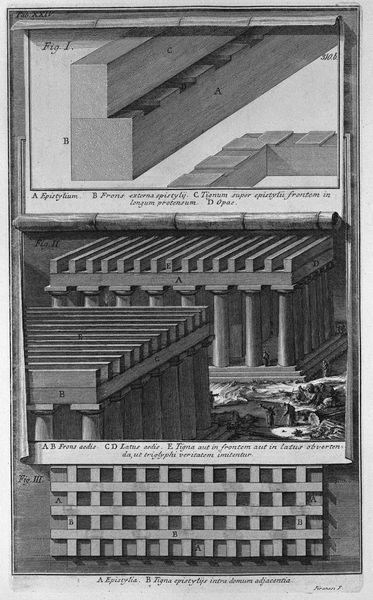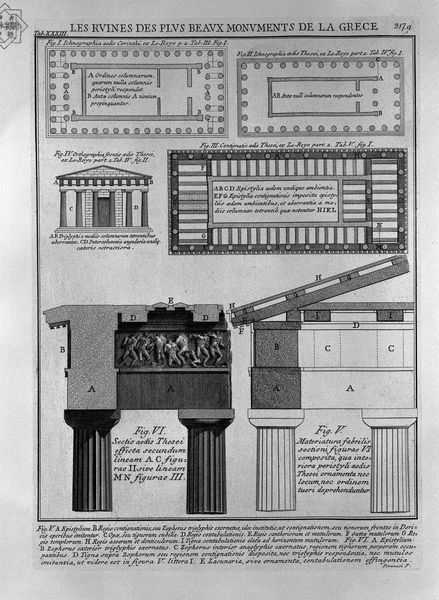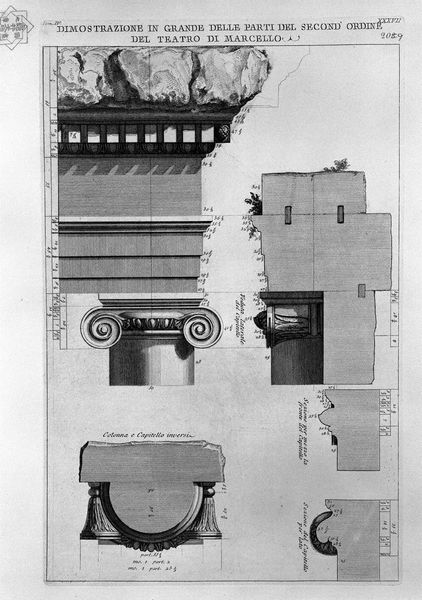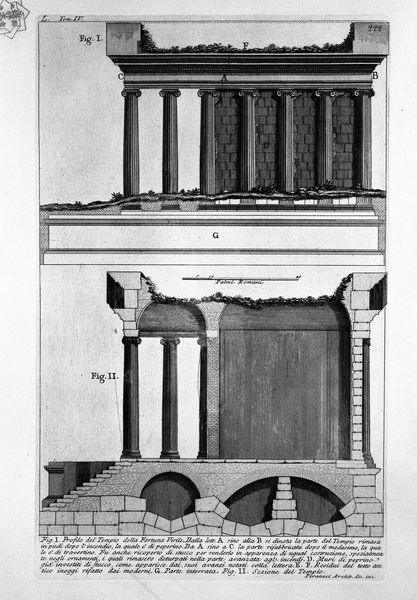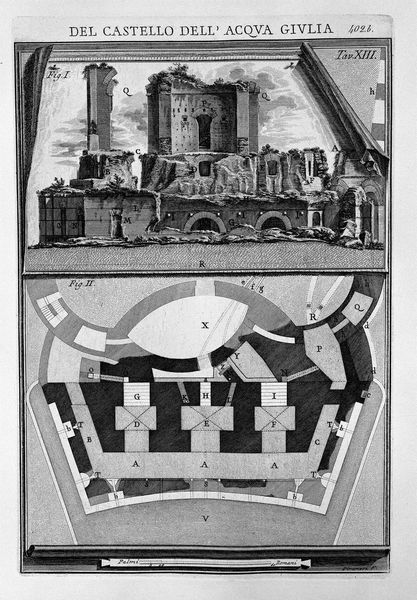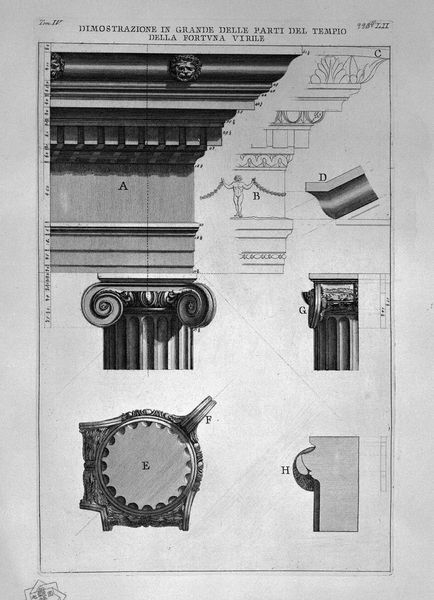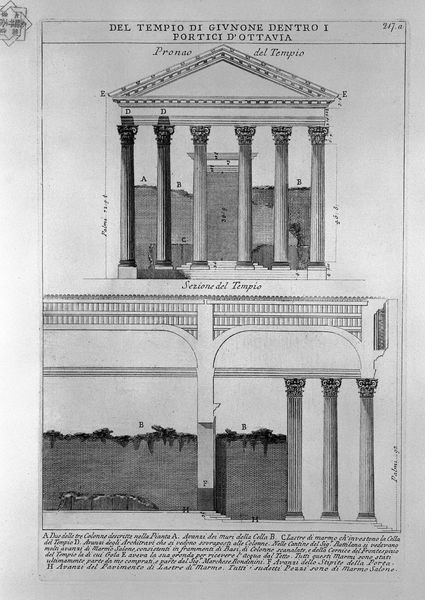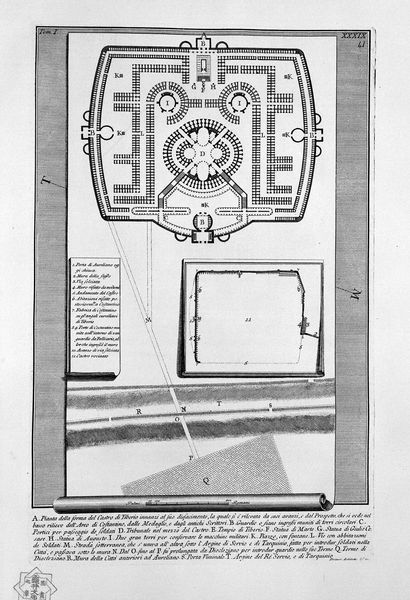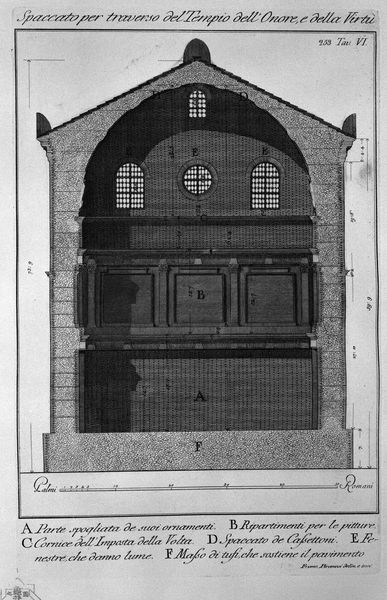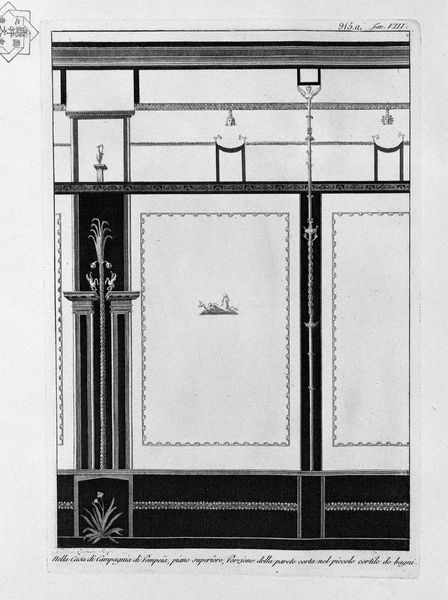
Several adorned the walls, vaults and floors in mosaic, existing in the cam of the Opera House for the decorations of Pompeii
0:00
0:00
drawing, paper, engraving, architecture
#
drawing
#
neoclacissism
#
greek-and-roman-art
#
paper
#
geometric
#
line
#
history-painting
#
engraving
#
architecture
Copyright: Public domain
Curator: Looking at this piece, I’m immediately struck by the rigid, almost scientific, way it documents the ornamentation. There’s a formality that reminds us this isn't just art, but a record, a study. Editor: A study in pattern, wouldn’t you say? The composition strikes me as both elegant and eerie—the black and white etching gives it a ghostlike quality. Like we're glimpsing a past both vivid and irrevocably gone. Curator: Exactly. It's an engraving titled "Several adorned the walls, vaults and floors in mosaic, existing in the cam of the Opera House for the decorations of Pompeii" by Giovanni Battista Piranesi. It’s fascinating how he depicts the interior decoration from Pompeii—captured in precise detail, but also distanced. The viewer becomes a researcher examining the past. Editor: The repetition of motifs—garlands, masks, figures with spears—suggests not just decoration but also a deeper, symbolic language at play. It makes me wonder what those ancient emblems communicated to the people who lived amongst them. What memories did these images spark? What power did they hold? Curator: The "Grand Tour" was popular, especially for wealthy Europeans and Americans. So documenting and distributing engravings like this helped circulate these visual motifs, contributing to Neoclassical taste. Pompeii wasn’t just a city; it became a repository of ideas, aesthetics, and historical narratives that influenced art, architecture, and design for centuries. Editor: Notice the theatricality in the layout. It’s almost staged, prompting us to decode these carefully arranged emblems and consider what values they might express about the civilization that made them. And despite being ruins now, they still communicate volumes about artistry, architecture, and taste in ancient Roman times. Curator: It speaks to the persistent human need to understand and capture history and cultural practices. The formal rigidity contributes to this study. Editor: Agreed. There's so much history contained within this drawing, it invites us to reflect on the symbolic legacy that Pompeii carries forward.
Comments
No comments
Be the first to comment and join the conversation on the ultimate creative platform.
